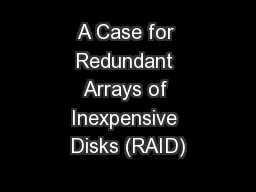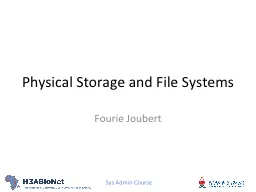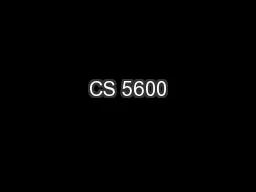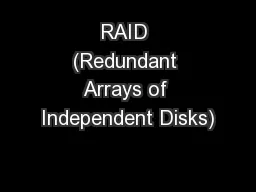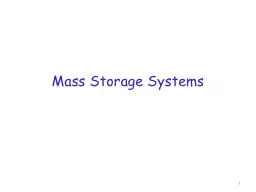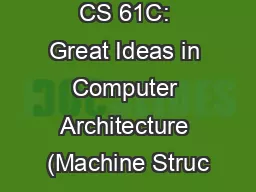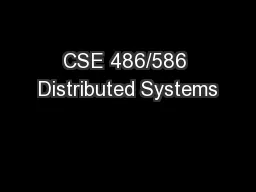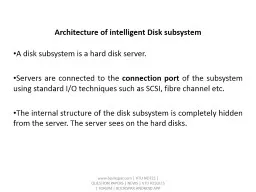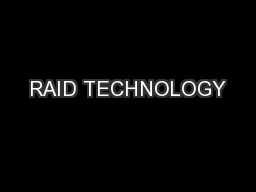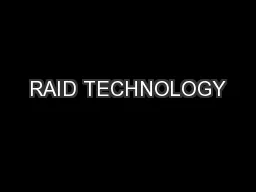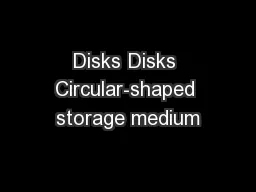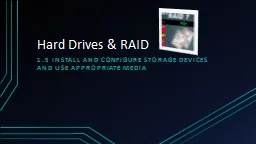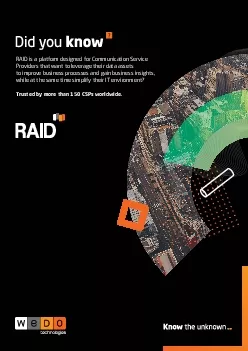PPT-A Case for Redundant Arrays of Inexpensive Disks (RAID)
Author : cheryl-pisano | Published Date : 2017-06-05
Ofir Weisse EECS 582 W16 1 About the paper Published in 1988 Summarized existing technologies EECS 582 W16 2 Motivation Whats In the Box That we call a computer
Presentation Embed Code
Download Presentation
Download Presentation The PPT/PDF document "A Case for Redundant Arrays of Inexpensi..." is the property of its rightful owner. Permission is granted to download and print the materials on this website for personal, non-commercial use only, and to display it on your personal computer provided you do not modify the materials and that you retain all copyright notices contained in the materials. By downloading content from our website, you accept the terms of this agreement.
A Case for Redundant Arrays of Inexpensive Disks (RAID): Transcript
Download Rules Of Document
"A Case for Redundant Arrays of Inexpensive Disks (RAID)"The content belongs to its owner. You may download and print it for personal use, without modification, and keep all copyright notices. By downloading, you agree to these terms.
Related Documents

